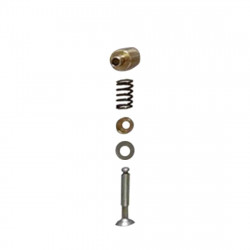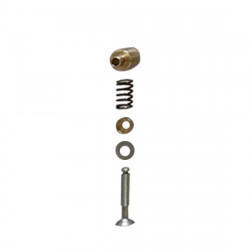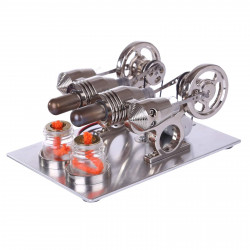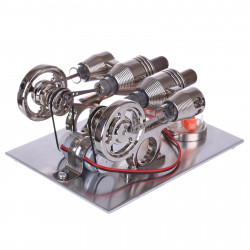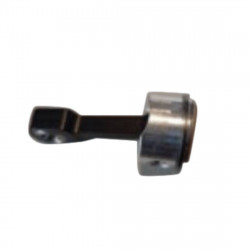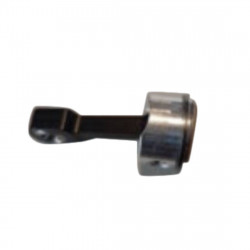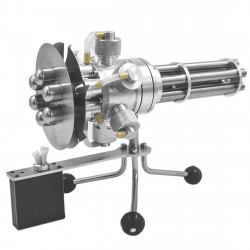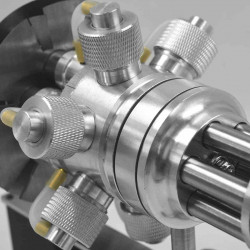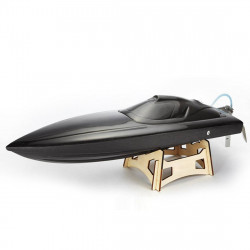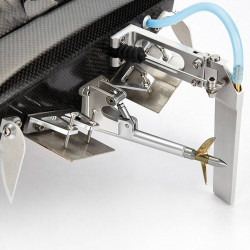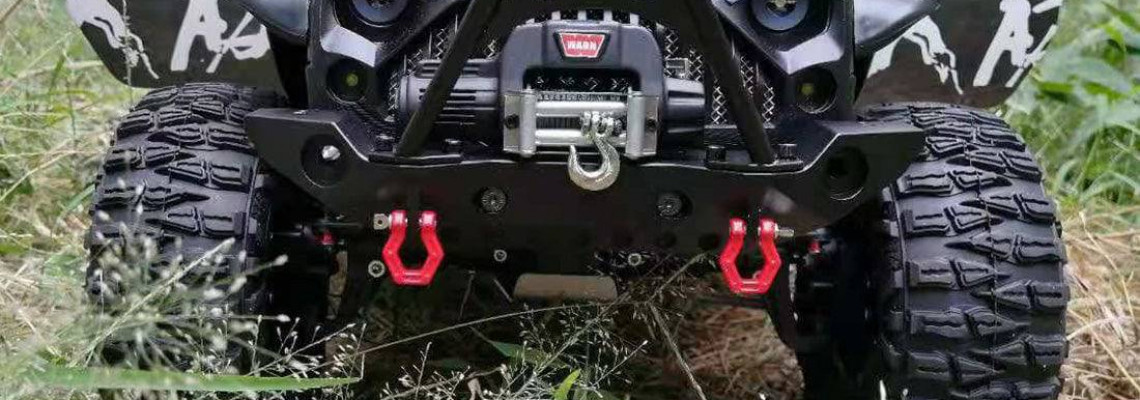
RC Battery Guide
You will learn how to take care of and repair your vehicles as an RC vehicle enthusiast.
Hobbyists are naturally motivated to maintain their vehicles to keep them operating at their peak and lasting a long time. This entails learning a little bit about the fundamentals of electronics, batteries, mechanics, cleaning, and general hard work.
Playing around and expanding your RC collection will teach you more about how your vehicle works, which will help you become more proficient at RC repair and operation.
Understanding batteries is one of the most important parts of caring for and maintaining an electric remote-controlled vehicle.
As you may have already read or heard, the majority of electric RC items use either lithium polymer (LIPO) or nickel-metal hydride (NiMH) batteries.
Key Terms
Let's review some important terms related to RC batteries before delving into the specifics of selecting either battery. mAh stands for milliampere-hour or battery capacity. If your battery's mAh is higher, it will last longer before needing a full recharge.
Overall, a battery with a larger capacity will last longer. A 5000 mah battery, for instance, will power your car for around 2.5 times as long before needing to be recharged as a 2000 mah battery.
The amount of power or speed that the battery can provide is referred to as voltage. Generally speaking, a vehicle's top speed increases with voltage. However, each RC vehicle has a maximum voltage that it can withstand before suffering significant damage. The specs of your Electronic Speed Control (ESC) and, to a lesser extent, the motor govern how much voltage your RC can withstand.
The type of battery being used and the number of cells in each battery pack influence the battery's voltage. A NiMH battery pack typically consists of 6–7 cells, each of which can carry 1.2 volts. The majority of LIPO battery packs have two to four cells. Because LIPO batteries carry 3.7 volts per cell, fewer cells are needed per battery pack. Sometimes, LIPO batteries are identified by their #S. For instance, a 3S battery would contain three cells and an 11.1-volt voltage.
NiMH and LIPO Batteries
After learning some battery jargon, let's examine the two sorts of batteries.
Higher energy density in smaller sizes is a well-known feature of LIPO batteries. LIPO batteries can provide the energy bursts needed for acceleration and driving through resistive surfaces since they are lighter and have a far higher surge/discharge capacity than NiMH batteries. In contrast to NIMH batteries, which experience a faster voltage drop during discharge, LIPO batteries sustain their voltage for a more extended period.
Another rating for LIPO batteries is C, which indicates the battery's continuous discharge rate or surge capacity as well as its 10-second burst rating. Most RC brushless electric vehicles can operate with a rating of 25 to 30 C, although more excellent C ratings are OK as long as they don't go over what the ESC can manage. This only becomes an issue when driving through a resistive surface, such as thick grass, and using a battery voltage at the upper end of your ESC range. Your brushless ESC will raise the battery's discharge requirement, and if the battery has a high C rating, the surge may be greater than the ESC and motor's combined capacity.
Although they cost more, LIPO batteries are generally lighter than NiMH batteries with comparable voltage and capacity. Because they can sustain voltage for a more extended period before the battery pack is fully depleted, they do provide your car with more reliable power.
Although LIPO battery technology has significantly improved in safety over time, extra caution is still needed. Among the safety measures and LIPO care procedures are:
The majority of brushless ESCs feature a low-voltage cut-off at this level. Thus, avoid letting LIPO batteries drop below 3 volts per cell, as this could destroy the battery.
Prevent punctures or physical harm to the LIPO battery, and do not use or charge it if it is physically damaged. Although LIPO batteries with a hard casing are more resistant to harm, soft packaging is also an option, provided the vehicle's battery box offers protection.
Use a balanced charger (also known as a balanced mode) to guarantee that all cells are charged to roughly the same nominal voltage and, therefore, function similarly when fully charged. Typically, LIPO batteries have a white, independent charging connector.
To extend the life of your LIPO battery, store it between 50 and 70 per cent charged if you won't be using it for a few weeks. Driving your car for 10 minutes after fully charging the battery (you can change this period based on how long your battery lasts) should put the charge below 70%. This is one method to achieve this if your battery typically lasts 30 minutes. Alternatively, you can charge the battery for half of its typical charging time if it is nearly completely depleted. A fully charged battery may be stressed or harmed if it is stored when it is entirely or almost discharged. Additionally, we advise keeping the battery in a cold, dry place. You can also keep it in a LIPO storage bag.
Lastly, if a LIPO battery has begun to bulge, do not use it.
However, NiMH batteries are renowned for being incredibly safe, simple to use and charge, and typically having a longer cycle life between charges and discharges. Since they frequently can't withstand the surge requirements of brushless motor RC cars, these are better suited for brushed motor vehicles. For brushed motor cars, NiMH batteries are likewise the most cost-effective option.
Because NiMH batteries charge rapidly and discharge at a reasonably linear pace, the battery's charge decreases rather steadily while your car is in motion. In contrast to LIPO batteries, these batteries are less costly and don't need as much particular maintenance. They do not, however, provide the same intense power because, as the battery drains over time, your car will operate more slowly.
If you won't be using your NiMH battery for several weeks, you can store it partially or fully charged.
Technically, both NiMH and LIPO batteries can be used in brushed motor cars as long as their voltages are about equal. However, you must make sure the ESC has the low voltage cut-off needed for LIPO cells. If you are using a LIPO battery, you may adjust the strap setting on the majority of HSP brushed motor ESCs. You risk damaging your LIPO battery if you use it with a brushed motor ESC that isn't specifically compatible with LIPO cells.
Additionally, most LIPO batteries come with a different connector, so if you wish to use one, you'll probably need an adapter. Many brushed motor cars use a white Tamaya connector.
After you have completed driving your car, we advise disconnecting the battery for both NiMH and LIPO batteries. Even when the vehicle is off, ESCs can occasionally keep drawing power from the battery.
Charging and Safety
First and foremost, never leave a battery unattended when charging, and always charge batteries away from combustible objects. Making sure the charger and battery are in a secure location is crucial when utilizing a high-speed charger with a LIPO battery. A battery can malfunction or even catch fire if it is overcharged; therefore, always follow the manufacturer's instructions or, if in doubt, the 1 C charge guideline listed below.
When charging LIPO batteries, it is generally advised to maintain the charge rate at 1 C. Use the 1 C rule, particularly for LIPO batteries, if the manufacturer's charging instructions are missing. According to this guideline, you should charge the battery at a rate that is twice its amp capacity. To reduce battery stress, a 5000 mAh battery, for instance, should be charged at 5 amps or less.
We have discovered that if you use a fast charger to charge NIMH batteries at a rate higher than 2.9 amps, the battery might not charge completely.
There are battery chargers that allow for a quicker charge, but you must be aware that this may wear down the battery and could accelerate its degradation. On the other hand, a faster charger allows you to resume enjoying your RC vehicle more quickly. However, it might also be dangerous to use the wrong charger for your battery type.
